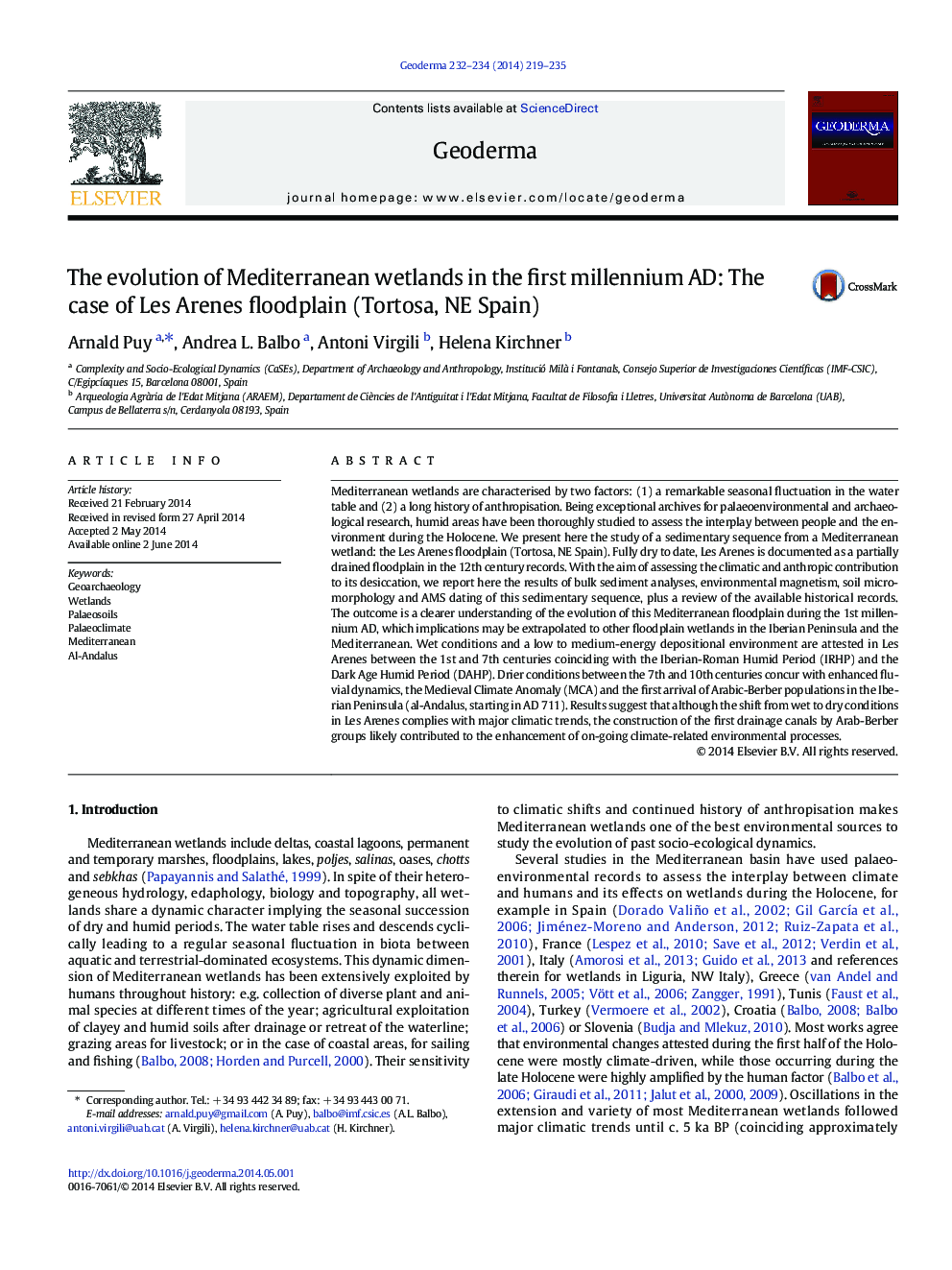| کد مقاله | کد نشریه | سال انتشار | مقاله انگلیسی | نسخه تمام متن |
|---|---|---|---|---|
| 6408721 | 1629469 | 2014 | 17 صفحه PDF | دانلود رایگان |

- Wet conditions and a low hydrological regime are attested between AD 86 and 686.
- Dry conditions and an increase in flooding are attested starting from AD 686 to 873.
- Dry conditions overlap with the MCA and the al-Andalus period (AD 711-1148).
- Construction of drainage canals likely reinforced natural floodplain desiccation.
Mediterranean wetlands are characterised by two factors: (1) a remarkable seasonal fluctuation in the water table and (2) a long history of anthropisation. Being exceptional archives for palaeoenvironmental and archaeological research, humid areas have been thoroughly studied to assess the interplay between people and the environment during the Holocene. We present here the study of a sedimentary sequence from a Mediterranean wetland: the Les Arenes floodplain (Tortosa, NE Spain). Fully dry to date, Les Arenes is documented as a partially drained floodplain in the 12th century records. With the aim of assessing the climatic and anthropic contribution to its desiccation, we report here the results of bulk sediment analyses, environmental magnetism, soil micromorphology and AMS dating of this sedimentary sequence, plus a review of the available historical records. The outcome is a clearer understanding of the evolution of this Mediterranean floodplain during the 1st millennium AD, which implications may be extrapolated to other floodplain wetlands in the Iberian Peninsula and the Mediterranean. Wet conditions and a low to medium-energy depositional environment are attested in Les Arenes between the 1st and 7th centuries coinciding with the Iberian-Roman Humid Period (IRHP) and the Dark Age Humid Period (DAHP). Drier conditions between the 7th and 10th centuries concur with enhanced fluvial dynamics, the Medieval Climate Anomaly (MCA) and the first arrival of Arabic-Berber populations in the Iberian Peninsula (al-Andalus, starting in AD 711). Results suggest that although the shift from wet to dry conditions in Les Arenes complies with major climatic trends, the construction of the first drainage canals by Arab-Berber groups likely contributed to the enhancement of on-going climate-related environmental processes.
Journal: Geoderma - Volumes 232â234, November 2014, Pages 219-235